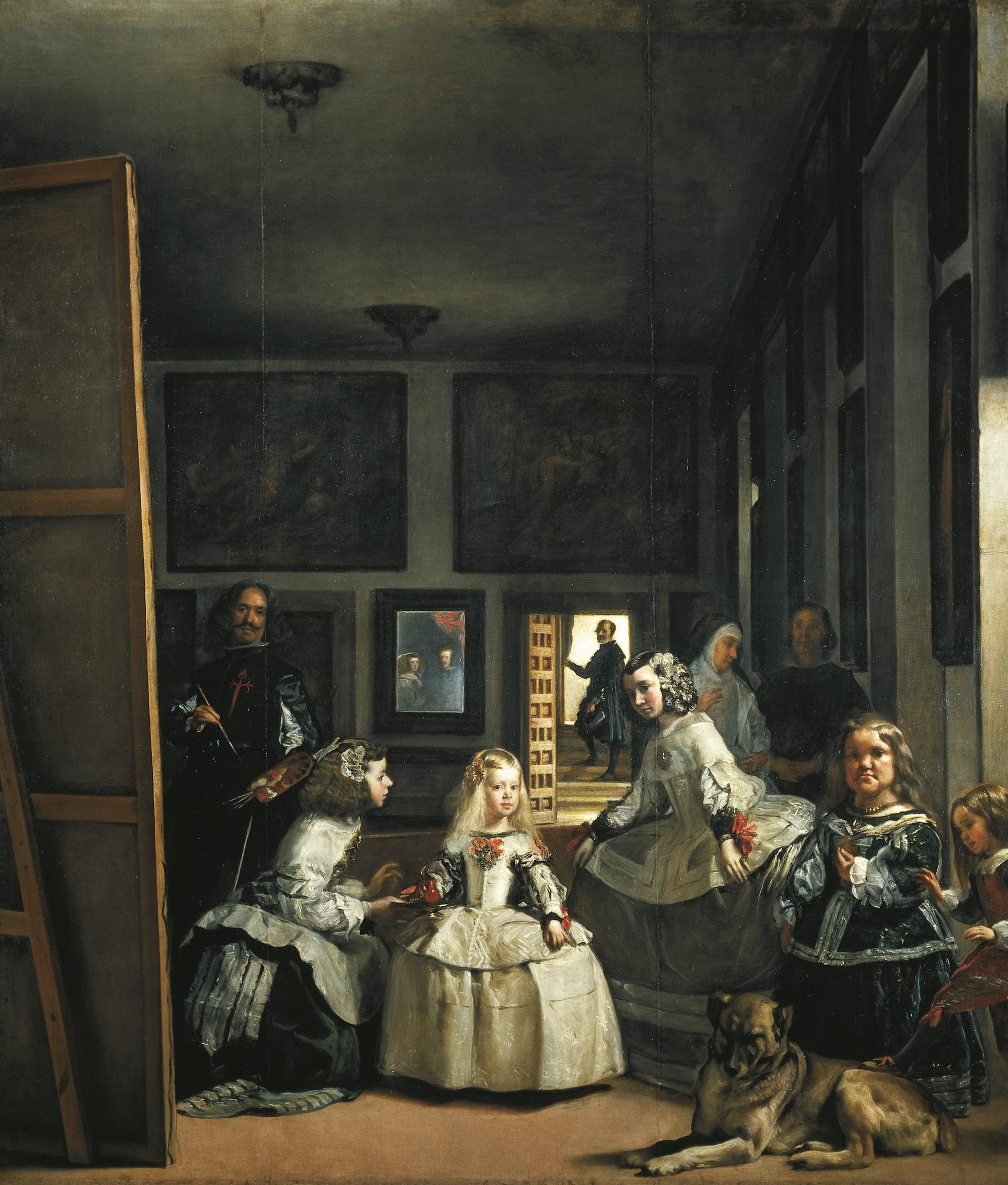
The 17th-century portrait Las Meninas (1656), or “The Maids of Honor,” is universally regarded as Diego Velázquez’s magnum opus, and perhaps the single greatest existing expression of classical Spanish art. Velázquez himself, King Philip IV’s court painter, is regarded as the leading artist of Spain’s 17th- and 18th-century Baroque style. He completed the painting just four years before his death.
“Few paintings in the history of art have generated so many and varied interpretations as this, Velázquez’s culminating work,” wrote art historian Jonathan Brown.
It comes as no surprise, then, that the Spanish public is fiercely protective of its crown jewel. By 1984, a layer of resin varnish applied to seal the painting after a previous restoration had yellowed. When both Spain’s Prime Minister and the Prado Museum’s director invited British-born art conservator John Brealey to clean the work, it caused an uproar.
The art restorer John Brealey works on Diego Velázquez’s masterpiece Las Meninas the Prado Museum studio. Photo: Paco Junquera/Cover/Getty Images.
Brealey, who was the head of conservation at New York’s Metropolitan Museum of Art, had restored several of the world’s greatest paintings, from the Mantegnas in the Queen of England’s collection to the Metropolitan’s Raphael altarpiece. He agreed to clean Las Meninas but refused to accept a fee for his labors. He spent weeks working on the 10½-foot-tall masterpiece, sequestered in a room at Madrid’s Prado Museum that was sealed off from the rest of the building.
The Spanish press criticized Brealey at every opportunity, arguing that only someone born and raised in Spain could truly comprehend, and be allowed to handle, such an iconic piece of their culture. One day, a small riot broke out outside the room where Brealey was working. A professor of fine arts and his students demanded to see the painting and stop its cleaning, claiming they had seen lifted paint in cotton swabs used by Brealey. Fearing an angry mob, the conservator stopped for the day and fled the scene.
Diego Velázquez, Las Meninas (The Maids of Honor), 1656. Detail. Photo: DeAgostini/Getty Images.
In an interview with the Museo del Prado, George Bissaca, conservator emeritus at the Metropolitan Museum, described the psychological, emotional, and even physical consequences Brealey suffered for his involvement in the project.
“People were so incensed of the fact that a foreigner was invited to work on the greatest expression of Spanish painting… In the press, there would be terrible attacks on him, all the time,” he said. “But he did a beautiful job anyhow… but it cost him a lot. I think he never really recovered from the shock of all that… Many people think that his stroke was a result of that stress.” Brealey died from “complications after the amputation of a leg following a stroke,” according to his obituary in the New York Times.
On his final day working on Las Meninas, Brealey surprised the Prado’s team of young restorers by inviting them to apply the final coat of resin. In the end, the public celebrated Brealey’s achievement. The painting was moved from the dimly lit room where it was formerly displayed and was put on exhibit in a special basement gallery. A 1984 Times article commemorates Brealey’s reception of the Gold Medal for Achievement in the Fine Arts, one of Spain’s most prestigious awards. According to the article, “The medal was given to Mr. Brealey Wednesday by King Juan Carlos at a ceremony in the Prado that was attended by many leading figures in the arts in Spain.”
Brealey later quipped that the medal “should have been awarded for valor under fire.”
What’s the deal with Leonardo’s harpsichord-viola? Why were Impressionists obsessed with the color purple? Art Bites brings you a surprising fact, lesser-known anecdote, or curious event from art history.